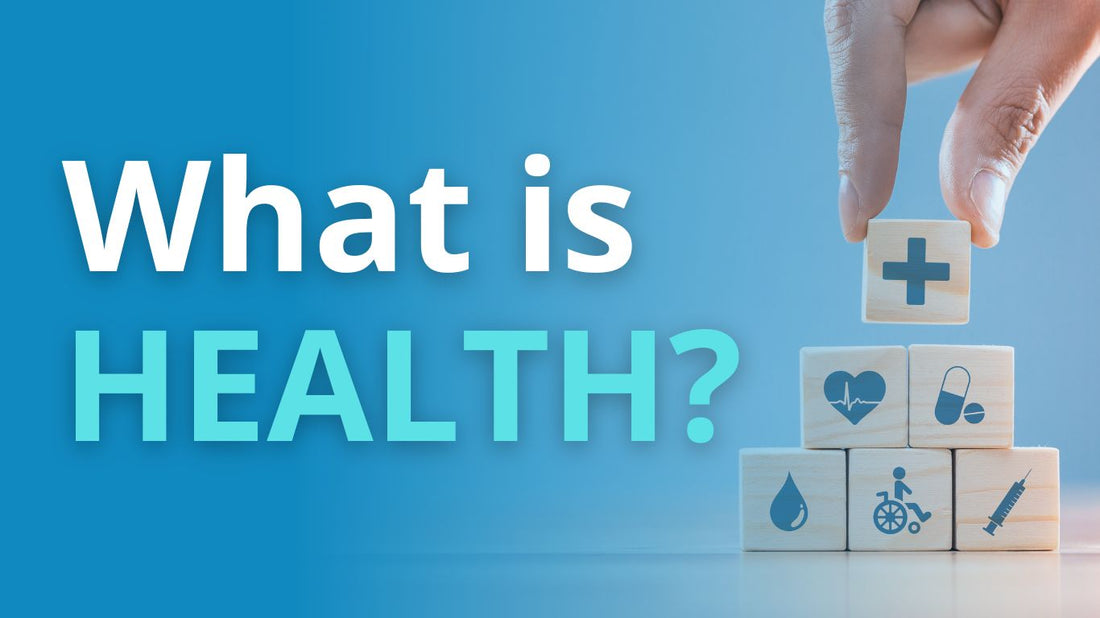Suppose that I were to ask you to define the term “health.” What kind of answer would you give me?
There is a general opinion and consensus that good health is: (1) feeling “fine,” or (2) when everything is working okay, or (3) when there is an absence of pain.
All of these definitions are somewhat true but are far from complete. Taber’s medical dictionary defines health as, “A condition in which all functions of the body and mind are normally active.” The World Health Organization defines health as a state of complete physical, mental or social well-being and not merely the absence of disease or infirmity. So the next question to ask is how does one quantify health?
In a sense then, health is equal to balance. How do you determine balance? What are the determining factors in the balancing equation? To answer this we must first ask, what comprises the overall scheme of health? Also, what kind of an overall gauge can be used to reflect back on the quality of health we experience or lack thereof?
In order to get to the core of good health you need to start at the cellular level. The balancing act begins there. You see the quality of your life is based on the quality of the life of your cells. Considering the fact that you are comprised of over 70 trillion cells, you can assume that when those cells are working optimally in perfect harmony with each other, you will have health.
But again how does one quantify this?
Now if health equals balance, then we can state that the opposite of health, which is not disease, but rather dis-ease meaning a lack of balance or ease. It can also be said that the cells are not functioning correctly.
Raymond Francis, a chemist and graduate of MIT, believes through his research that there is only one reason in which disease is created. That reason is simply due to cells not functioning properly. When you think about that statement, it makes sense. Now there are only two reasons why cells do not function appropriately. They are:
- Cells are not receiving proper nutrition and/or
- Cells are not eliminating their toxicity produced by the normal functioning of the cell.
Now there are at the root many reasons why these cells can become dysfunctional. Those reasons are:
- Lack of appropriate levels of oxygen
- Lack of nutrients
- The inability to eliminate waste
- Improper nerve impulse to the cell
To begin to understand this process let us quickly visit the stages of health. When one is conceived, we are given as a birthright the ability to express health effortlessly. However if there is a disturbance in the intimate relationship between the nervous system and the rest of the body, you will lose your efficient ability to express health.
As we age, we experience the effects of the years initially only through a microscopic inspection. Long before we feel the effects of age, our cells are beginning to experience changes. Cells are beginning to replicate less efficiently, and then one day we transition from the anabolic phase of life, which means that sufficient cells are replacing those that have just died, to a phase of catabolic metabolism, in which we have more cells that are dying than are being replaced. When we enter the catabolic stage, we must do everything within our power to slow it down.
To better understand the process of health, it helps to understand the phases of health. The first phase is one of perfect balance or homeostasis. This is optimal health where everything is working the way it was designed to work. However, as we age, we begin to encounter emotional, physical, and chemical stresses in our lives to the point where we will enter into a phase of imbalance, lack of ease, or dis-ease. Health can easily be regained in this phase as long as we refocus our efforts on finding the cause of what brought us initially on that path of imbalance. If that is achieved, then we can regain a state of balance.
However, if this phase is not dealt with appropriately, then we enter into a phase of discomfort, and dis-ease. This phase can have with it associated levels of pain, but not in all cases. Sometime there are no visible or felt symptoms. If we stay in this phase for any real amount of time, we begin to have dis-ease of more than one cell. It begins to affect thousands and thousands of cells, to the point of reaching into the body’s tissues. Left further without a reversal of the dis-ease, then it enters into a larger group of tissues which would then be affecting organs. It then moves onto systems, and then ultimately it affects the entire being, and we then die.
I’m not proposing that we can live forever. I am however saying that 90% of our medical expenses are spent during the last 10% of our lives. People are no longer dying of natural causes. The majority of deaths in this country are related to degenerative processes. When one can minimize that process one can live a longer, higher quality of life.
Therefore, the key to overall health is to correctly determine the appropriate factors involved in health. This means managing health at the cellular level. Health is a consequence of choices one has made or not made.

